Student Blog
Classes
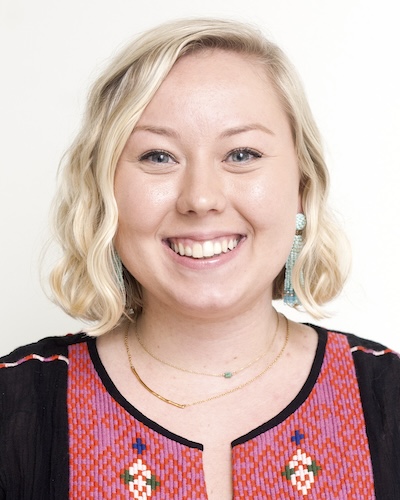
Getting into the Swing of Spring! ⟩
January 16, 2018, by Caroline
Classes Life Hacks
Spring semester is officially here! I’m definitely still getting back into the swing of classes and schoolwork after a long winter break. I had exactly a month off — and I definitely used it! Ali made the point that this may be the last long school break we’ll have, so I’m glad that I filled it with so many meaningful occupations! I was able to visit a friend from college in Nashville, TN (the country music fan in me was over the moon), spend Christmas with my family back home in North Carolina, and then finished it off with a family vacation in Hawaii filled with hiking, snorkeling, and sight-seeing. Check out a couple of pictures from Hawaii — my family and I hiked Manoa Falls in Honolulu; I also enjoyed relaxing by the beach, and I even tried Standup Paddleboarding for the first time!
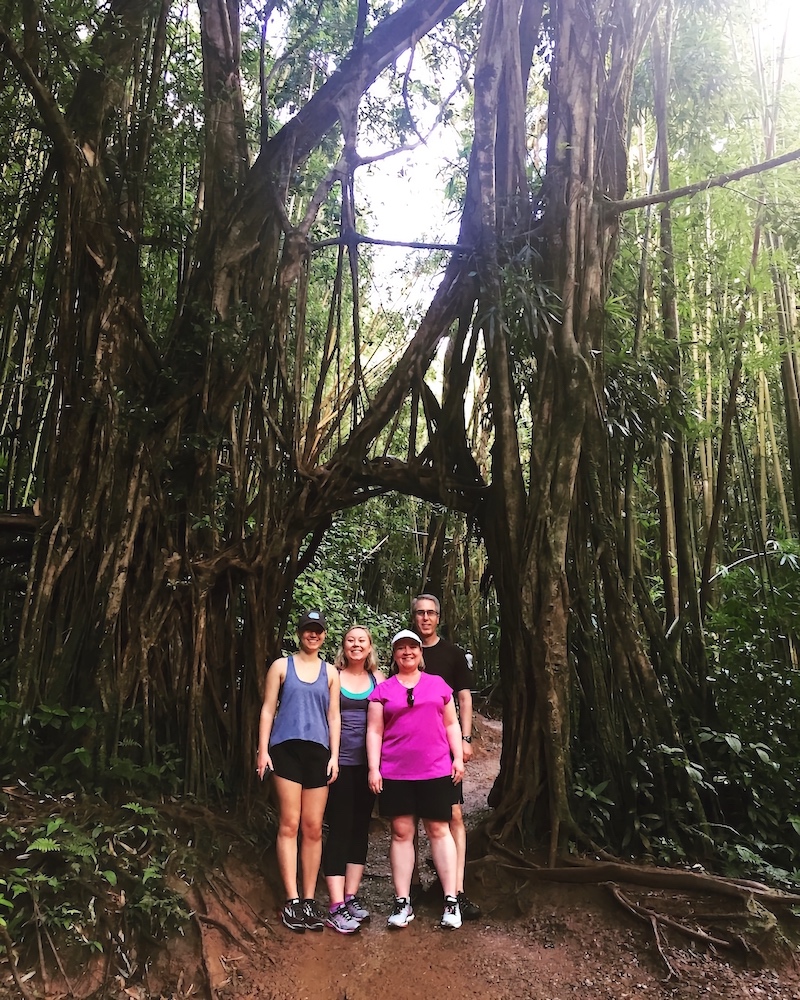
My family and I hiked Manoa Falls in Honolulu.

I spent some time relaxing by the beach, and I even tried Standup Paddleboarding for the first time!
Although leaving the beautiful beaches of Hawaii was tough, I’m excited to be back at school for this final semester in the Master’s program. Up until now, all of my courses were selected for me, as I worked my way through the Entry-Level Master’s Program curriculum. This semester, however, is unique because I got to select elective courses to fill my schedule. There are two required courses: OT540: Leadership Capstone and OT545: Advanced Seminar in Occupational Science that all second year students take in the spring.
The rest of my schedule is filled with the electives of my choosing! I see myself going into Pediatrics, so I chose elective courses related to Pediatric practice. I’m taking OT 564: Sensory Integration and OT 565: Sensory Integration Interventions, which count for part of the educational coursework to become certified in Sensory Integration. It’s unique that I’m able to start working towards this certification as part of my Master’s Curriculum, so I’m really grateful for this opportunity. I also get to learn from Dr. Erna Blanche, who studied Sensory Integration under Dr. A. Jean Ayres (who is basically an OT celebrity because she developed Sensory Integration Theory). In OT 567: Contemporary Issues: Occupational Therapy in Early Intervention, I get to learn about OT for children birth-3 years old, with an emphasis on the importance of family-centered and culturally-relevant practice. Finally, I’m taking OT 575: Dysphagia Across the Lifespan: Pediatrics Through Geriatrics. This class is all about swallowing disorders — I already got to look into my classmates’ throats to look for certain anatomical landmarks on day 1, so you could say it’s going well.
Because second years are all taking elective courses, we’re no longer divided up by cohort. Everyone is mixed up into different combinations, based on the classes we chose for ourselves. I definitely miss the familiarity and comfort of the 45ish students in my cohort, but I also value hearing opinions from different classmates.
It’s already shaping up to be a busy and eventful semester, but I’m just trying to take in as much as I can and enjoy these final few months (both in class and outside of class) with my classmates and friends before we all move on to the next step in our OT careers!
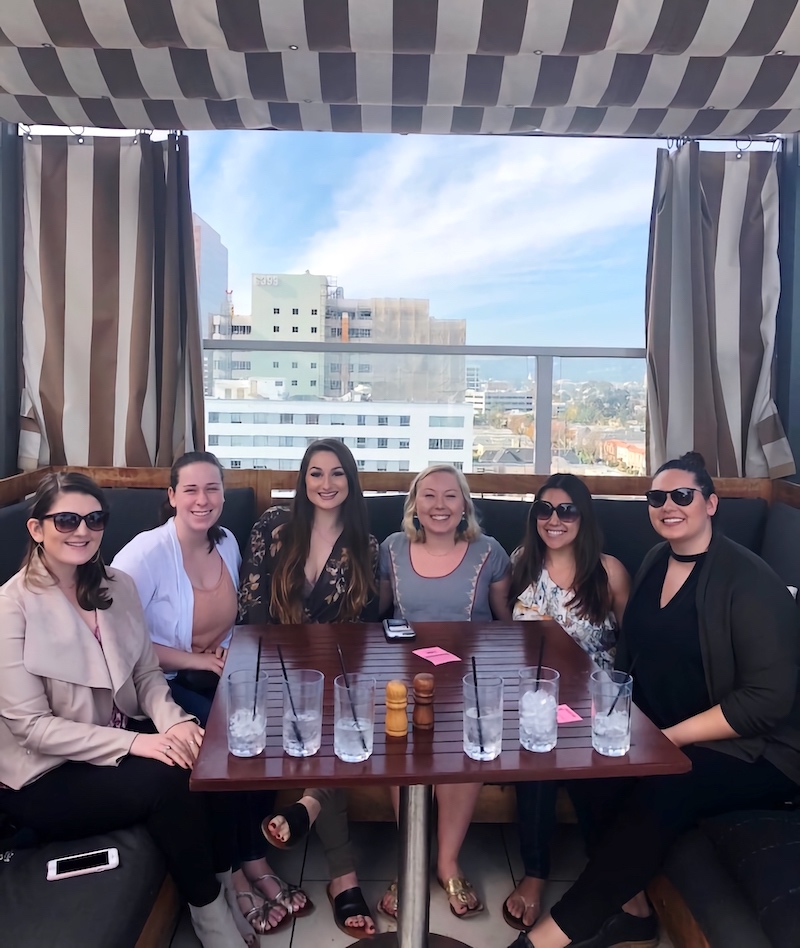
I celebrated the start of the semester with brunch with friends, surrounded by LA rooftop views.
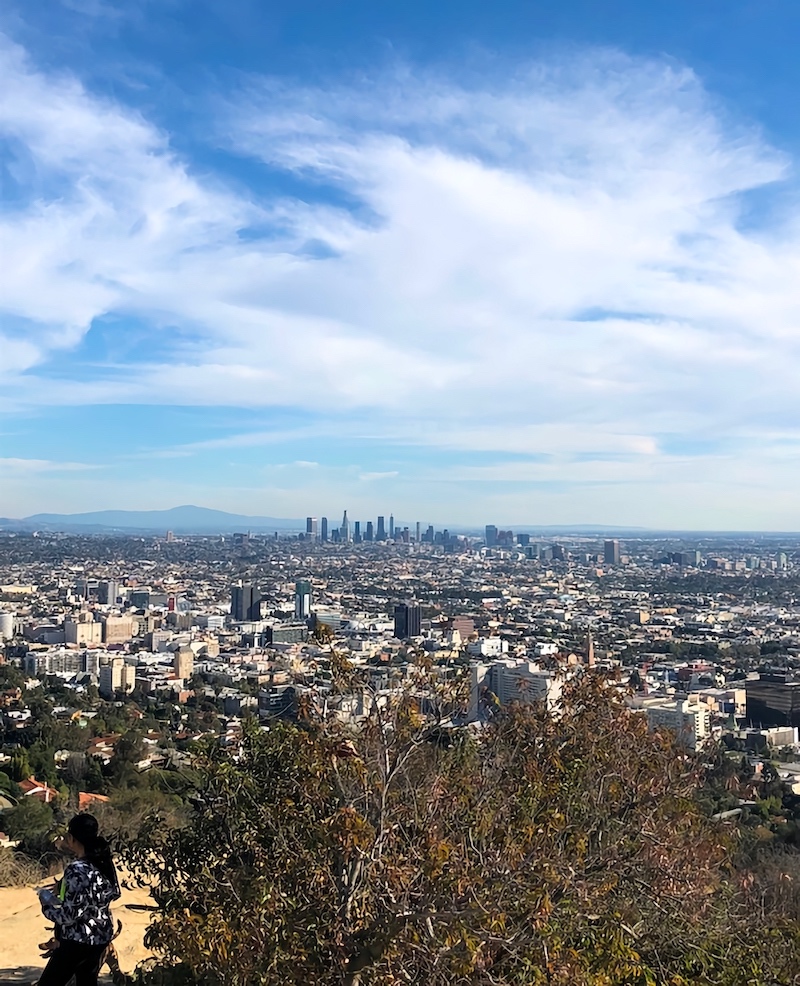
I took advantage of the long weekend to hike Runyon Canyon, with a great view of the Downtown LA Skyline.
Looking forward to more fun LA outings throughout the semester — gotta fill my No-Homework-Saturdays somehow, right 😉
⋯

Benefits of Cohorts ⟩
November 28, 2017, by Ali
Classes
This is our last week of classes with our cohorts, and it has me reflecting on what a special experience it is to study at USC in the Chan Division of Occupational Science and Occupational Therapy. As some of the other blogs have talked about, our entire class of Entry-Level Professional Master of Arts degree students is divided into three cohorts. So our 130-140 person class is broken up into 40-45 person sections. Across the span of three semesters, each cohort takes one of the three immersions focused on Adult Rehabilitation, Mental Health, or Pediatrics. The cohorts will rotate through each of these immersion courses over the three semesters.
Although the immersion coursework is with your cohort, the other thread courses such as Therapeutic Use of Self and Clinical Reasoning are with these same individuals in your cohort. The nature of these courses lends cohorts to be very close knit. We explore different practice areas together as well as develop our own sense of self as therapists. We develop our understanding of occupational therapy and build our clinical reasoning together. These semesters are formative in building our professional identities, so each semester we become more and more bonded as classmates and future therapists.
Reflecting on this last week of a rigorous semester, our last lab in Adult Rehabilitation focused on creating a meal together as a class utilizing adaptive equipment in the functional kitchen where our lab class takes place. There was no better way to end three semesters of coursework with my classmates than creating a meal together. As someone who is shy to speak up in a group of 130 people, with my cohort of 45 students who I got to know on a personal level I always felt comfortable asking questions or seeking out help from whomever I happen to sit next to that day. As Bryan references in his post a week ago, our cohort is constantly lifting each other up and checking in with one another.
Here are some pictures of Cohort B in Adult Rehabilitation during our last lab!
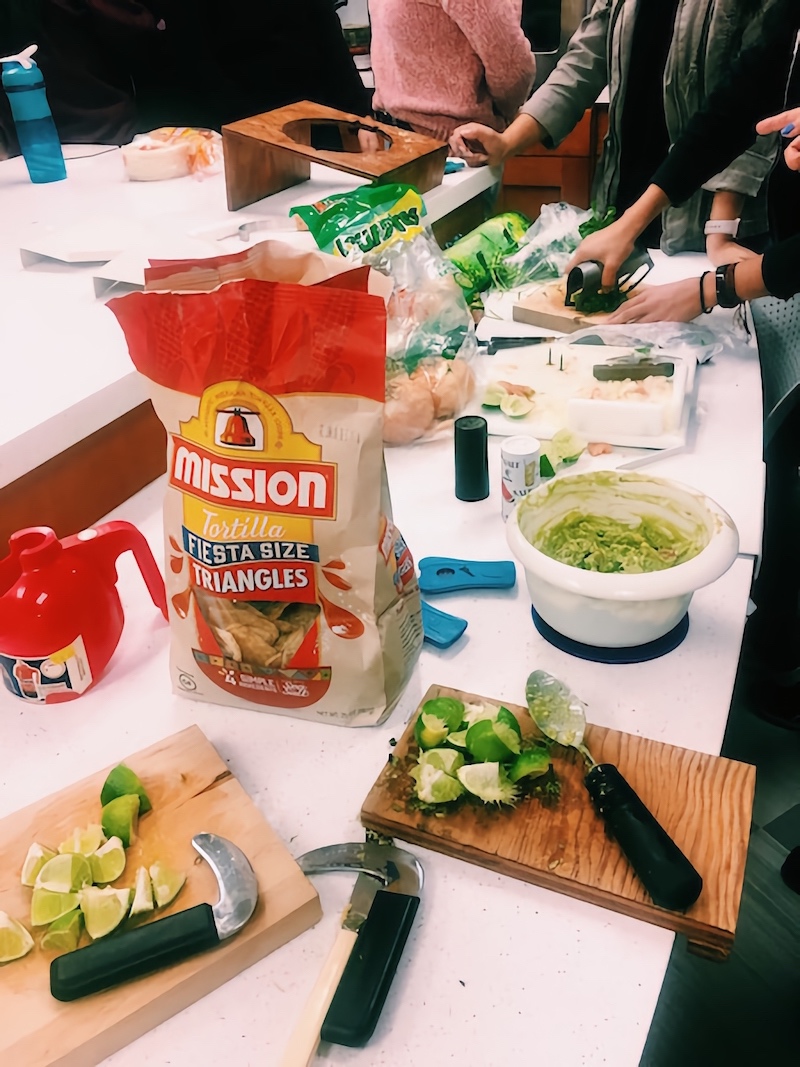
Taco Tuesday in our functional kitchen using adaptive equipment!

Cookie Creations with Cohort B!
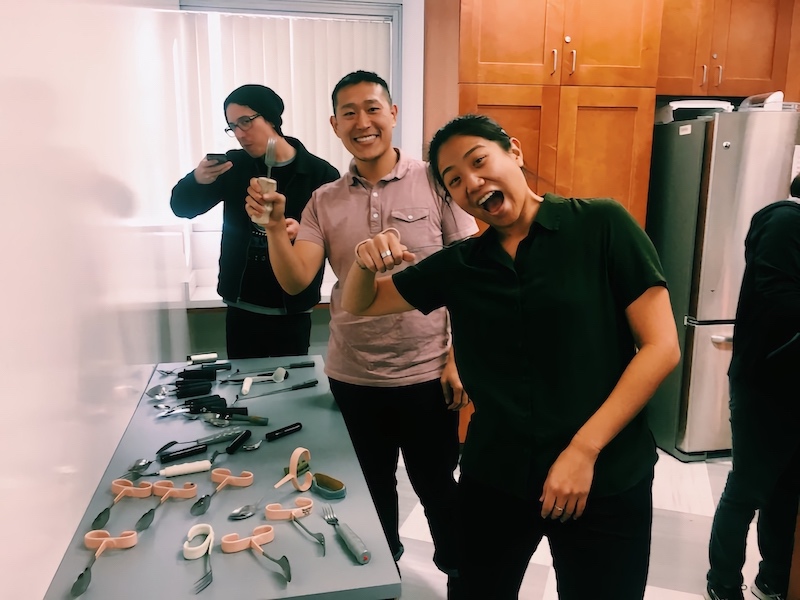
Fellow Student Ambassadors in Cohort B
⋯
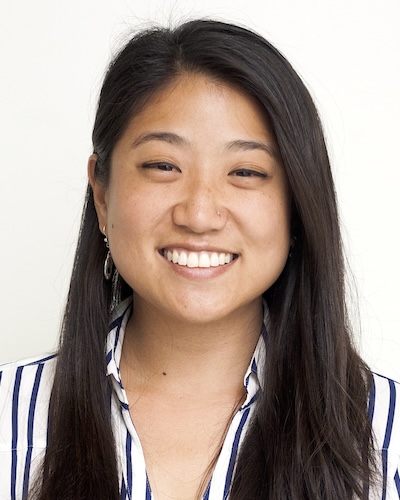
Keeping that Thanksgiving Train Going — Choo Choooooo! ⟩
November 21, 2017, by Erika
Classes What are OS/OT?
Jumping off of Ali’s lovely post on what she is thankful for this Thanksgiving season, I have equally been reflecting upon the last semester and the various opportunities and encounters I have experienced. While this list is by no means a complete list of what I am grateful for this season, I thought that I would limit this post to a couple things that come to mind:
- I’m thankful for my group members! I am taking two courses this semester that rely heavily on team based work- OT501: Adult Physical Rehabilitation and OT537: Occupation-Centered Programs for the Community. For both courses, our groups are set from the beginning and we work very closely throughout the entire semester. As most people know, team dynamics can typically be a gamble, but after 14 weeks together, I can honestly say, I won the JACKPOT. In both groups, every single person is inherently unique, willing to contribute, have supportive and kind hearts (surprise surprise, they’ve all chosen to pursue OT), and can laugh and joke like no one’s business. The best part of it all is that I didn’t know most of them that well going into the semester but they feel like family coming out. I am truly grateful for these beautiful people and for having the opportunity to get to know each of them better individually. They’ve brought me so much joy! Love you fams.
- I’m thankful for Adult Rehab! Like many incoming students to this program, I came in having a “good understanding” of what/where I wanted to practice. I was set on working in mental health. While that focus has not entirely shifted, I will say my interest has broadened now that I’ve learned more about occupational therapy, the various practice areas and populations they serve, as well as learning more about yourself and how I can best serve as an OT. I’m more than half way through my semester in Adult Rehab and I have to say, I never expected to be so curious and engaged in the subject matter. I had never been a physical or biological sciences enthusiast so all this content was a bit intimidating and foreign to me but with every week, my eyes have gotten bigger and my ears have perked up higher. Additionally, I was assigned to a really great Level I fieldwork placement at a Skilled Nursing Facility. My fieldwork educator was committed to ensuring that everything I was learning in the classroom, as long as it was available, I had the opportunity to see it in practice. With that said, I am grateful that every day in this program has the power to surprise you, debunk any assumptions you have going into the program, and potentially shine a light on a part of yourself or interests that you may have not ever considered.
Wishing you all a great Thanksgiving!
⋯

All I Do is Study for Adult Rehab ⟩
October 20, 2017, by Bryan
Classes Fieldwork Life Hacks
This semester feels like the culmination of my graduate school study skills. Speeding towards my own head-on collision with our midterm next week, I wanted to take a minute and share a few tips for getting the most out of the Adult Rehabilitation immersion course (though most of these can be applied to any course in our program).
- Talk to faculty. Whoever you receive as your instructor for the Adult Rehabilitation Immersion is a well of knowledge and wisdom. Talk to them and ask them to explain their reasoning and thought processes (i.e., ask Jane for more stories!). It is so helpful to paint a broader picture of how varied the specific injury or diagnoses might present itself in practice and the intervention/treatment ideas for each case scenario.
- Pay attention in lecture. While this sounds like common sense, lecture proved to be particularly important for me not necessarily in order to be exposed to the material for class, but to better understand how to use the information in our reading to treat patients. Building upon tip #1, the greatest thing about lecture is learning the faculty’s clinical reasoning and what observations they might expect from the patient when they hear the diagnosis of a C7 full spinal cord injury or stage 2 edema on the upper extremity. Understanding the information is just part of our job as clinicians, we must also know how to choose appropriate and attainable goals as well as treatment plan the “just right challenge” for our clients based upon a chart review and evaluation. Listening and asking the simple question, “what would you do and why would you do that?” helps prepare our own reasoning skills as students and future clinicians.
- Study consistently. I was less-than-half-probably-zero-percent-joking in my title because most of my time is actually devoted to threading through the dense material for the immersion. Amidst a jam-packed schedule, it has been an important habit to spend some time each day reviewing hip precautions and how to perform sensation testing because it takes a lot of practice and exposure to wrestle through and understand the “why” behind these procedures and information.
- Practice at fieldwork. This tip totally depends on where you are placed! I am currently at an inpatient rehabilitation unit and I have the opportunity to see most of what we talk about in class during my fieldwork day. But regardless of setting, make sure to ask questions and take initiative in practicing treatment planning and task analysis of ADLs with your CI and patients. I think something to keep in mind is to remember that you will be working with these same patients in Level 2 FW and post-graduation, so continuously be working on bedside manner and interpersonal communication.
I hope these tips help put some perspective on this immersion! Being dropped into all the information that comes with it. Study hard and enjoy the process!
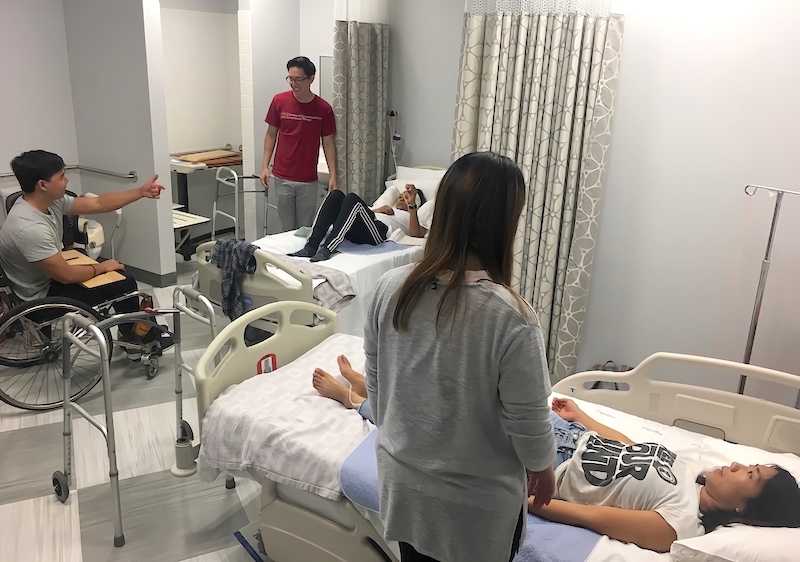
What better way to spend Thursday nights than having transfer parties?
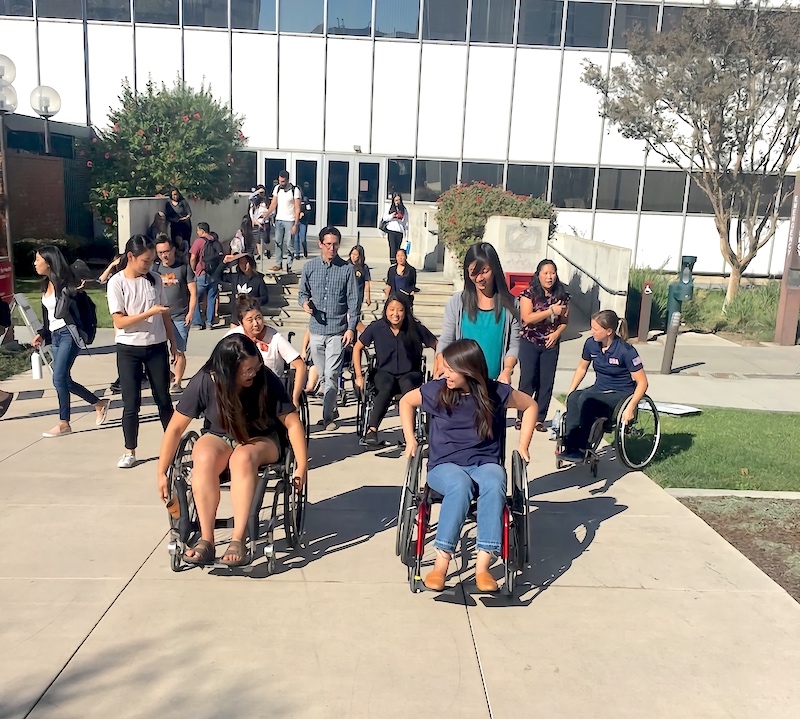
Learning how to maneuver wheelchairs!
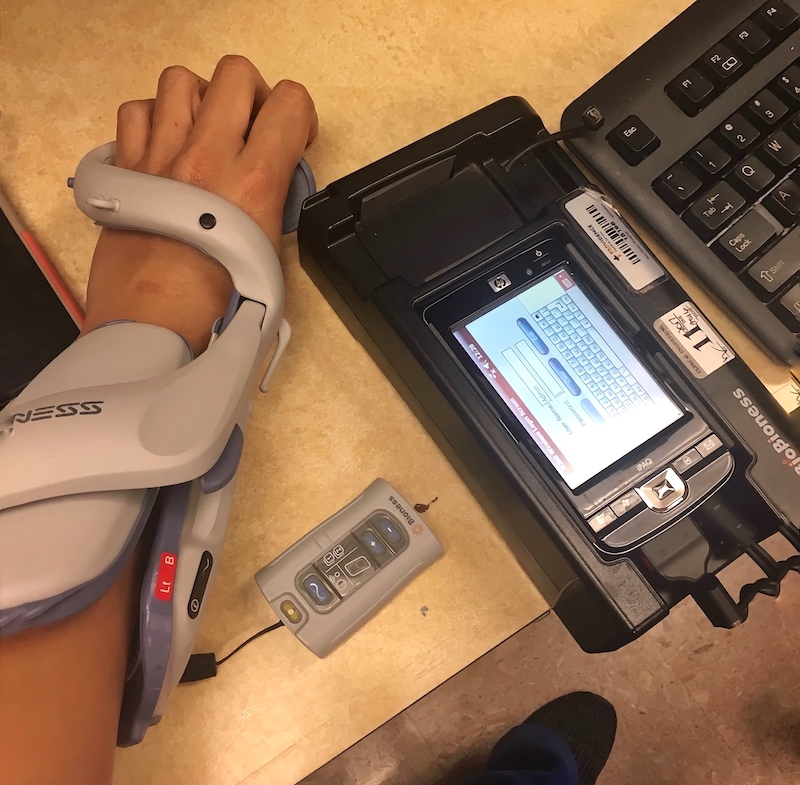
Trying out an estim at fieldwork
⋯

A Day in the Life of a USC Entry-Level Master’s Student ⟩
October 20, 2017, by Erika
Classes What are OS/OT?
Hi all!
Inspired by the Day in the Life of a Chan Student feature on the Division’s website, I thought I’d provide you with a breakdown of what a day may look like for me as a 2nd year Entry-Level Master’s student. My schedule is a little different everyday based on work hours as a student ambassador, my Level I fieldwork placement, and having Fridays off, but here is what a typical day may look like if I had a full day of classes. This is also similar to what a 1st years day would look like since they have the same 2 blocks of time carved out for classes.
A Day in the Life
7:20 — Alarm goes off! Snooze.
7:30 — Wake up! Get ready, make breakfast, pack lunch.
8:15 — Out the door!
8:35 — Look for parking around HSC.
Note: It’s LA! Parking will always be an issue. As a student, you do have the option of purchasing a parking pass on campus. If you choose to opt out of that option, you’ll have to do a bit of a morning hunt like I do to find free parking in the local neighborhood. I would say that after the first few weeks, you’ll get really good at figuring out the best places to park - not to mention know the street cleaning signs by heart! This option also allows for nice morning and afternoon walks to and from your car!
9:00-12:00 — Class
Note: Typically we will get (2) 15 minute breaks to stretch, reset, take a walk. During 1 of the breaks, you’ll probably see me at Eric Cohen Student Health Center getting free coffee, tea, or hot chocolate offered to all USC students!
12:00-1:00 — Lunch
Note: Many times, faculty, student orgs, or the health center may schedule meetings during lunch on various topics: Doctorate or PhD info sessions, Mentor/Mentee lunches, mindfulness classes, yoga on the lawn, etc. If I’m not at one of these, you may see me eating with friends on the patio or practicing transfers with them in the ADL lab.
1:00-4:00 — Class
Note: Afternoon classes can be tough so the free coffee break may happen at this point of the day. Good thing is, since our professors are OTs, they are very attuned to reading when the students are having attention difficulties or hitting an afternoon wall. They’ll break things up, encourage us to stand, take walks, or if we’re in the pediatrics classroom, swing on the swings for some self-regulation!
4:00 and on — Open!
Note: After class, what I do really varies depending on the day. I may have to work in the Student Ambassador office. I may have a meeting for Student Run Clinic. Perhaps I’ll hit up a yoga class, go to Barbara’s at the Brewery with a few friends for a beer, or visit my niece and nephew to play and have dinner! Either way, I find weekday afternoons as opportunities to decompress and chill after a full day of class.
11:30 — #sleepgoals
Thanks for reading! If you have any questions, feel free to write in the comments!
⋯





